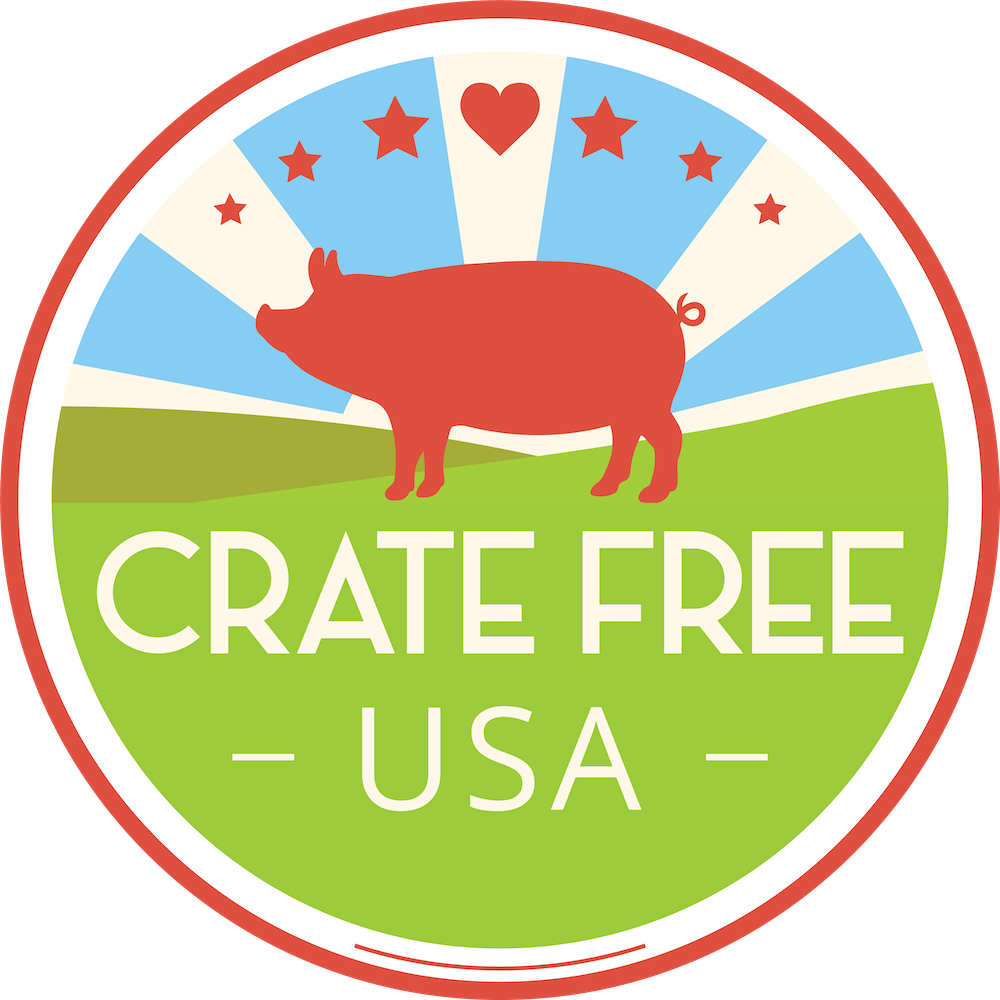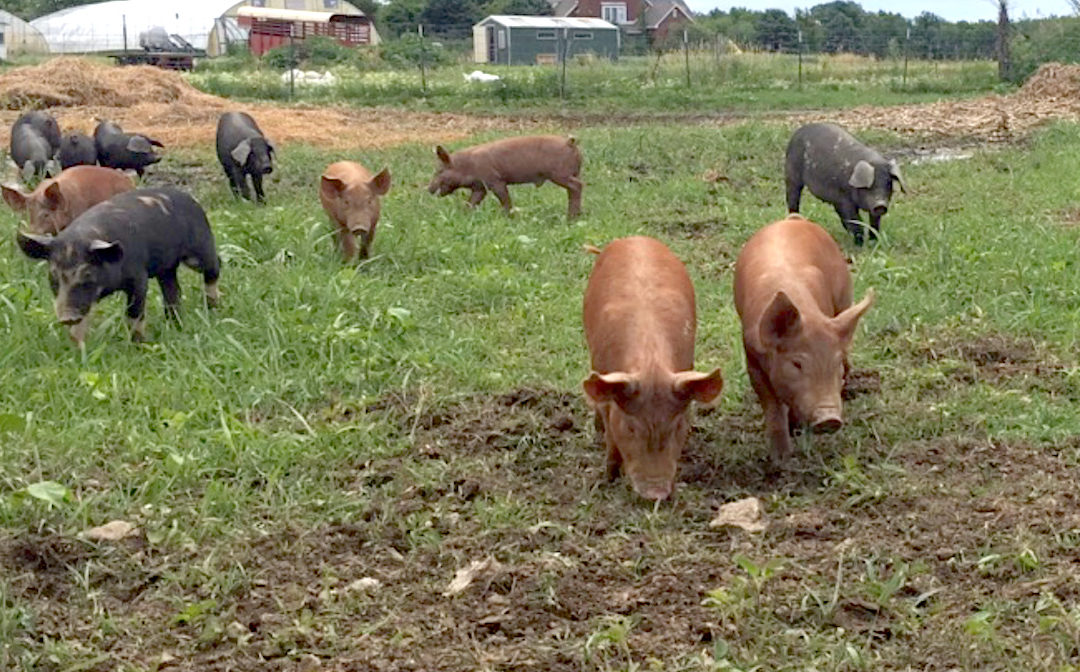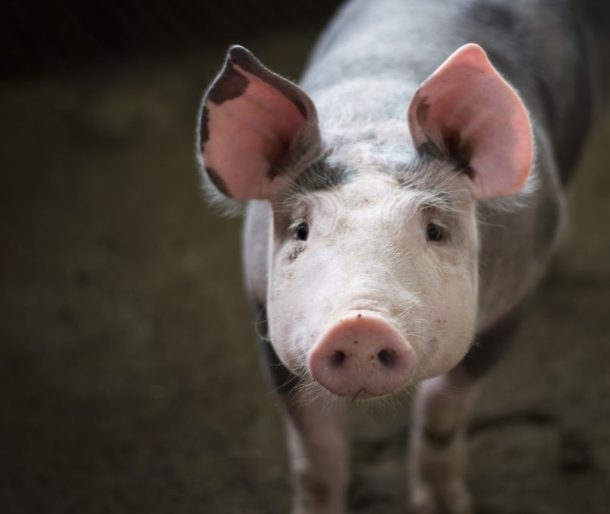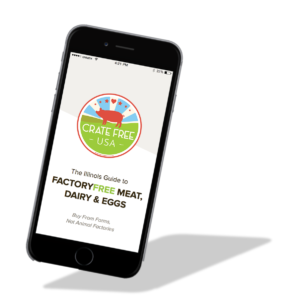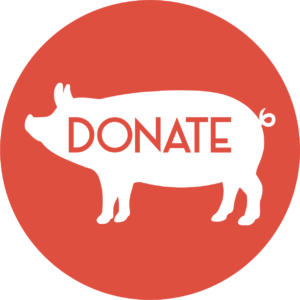Are you concerned about the lives of the animals on your plate? If so, you are not alone.
Survey data collected by the Animal Welfare Institute indicates that up to 75% of Americans agree that they are concerned about how farmed animals are treated. And as each of these consumers is likely to spend over $1,000 on animal products per year, the agricultural industry is responding eagerly to this pressure.
Unfortunately, their response may be making it harder for consumers to meet their ethical expectations. While 63% of consumers believe that they are intentionally choosing higher-welfare options, 98% of animal products come from the same low-welfare factory farms.
Marketing terms like “organic,” “grass fed,” “cage-free,” and “antibiotic-free” are everywhere, but this doesn’t reflect an industry shift towards improved welfare—it is simply a response to the flatlining sales of products lacking these terms.
While it may seem that the dazzling array of labels and claims exists to disorient and pacify Americans, there is a way to reclaim your purchasing power. As with any other cause, knowledge is the foundation for change. Once you understand what improves welfare and how to locate it in your local stores, you can resume voting with your dollars in a way that counts.
What does good animal welfare mean?
Animal welfare starts with the recognition that animals are sentient beings who can experience pain, discomfort, desire, and frustration. Many of the experiences that cause animals discomfort and frustration are due to their innate biological needs—like any other organism, they will suffer if their needs for food, water, safety, and good health are denied. This basic ground of preventing excess suffering is the root of the Five Freedoms model of welfare, which states that all animals deserve freedom from hunger, thirst, pain, illness, fear, and should be able to express natural behaviors.

The Five Freedoms are the bare basics of welfare, but there has been increasing recognition that they are hardly adequate. While they may prevent physical discomfort, they do not do enough for the mental state of an animal. Because domestic and farm animals evolved in natural environments, they have natural drives to perform innate behaviors and experience certain stimuli. Their genetic programming ensures that they are motivated to perform these behaviors because they were once necessary for survival, and frustration of these innate drives can lead to distress and maladaptive behaviors.
Welfare scientists know that animals are highly motivated to perform natural behaviors and experience natural stimuli because they will work to do so. For example, a chicken will prefer to forage for its food even when the same pellets are readily available in a bowl and will work for the ability to access the outdoors even when this requires significant energy expenditure. Animals who are confined in barren environments, even in the absence of pain and hunger, show higher levels of distress and may mutilate themselves or others.
It is for these reasons that the “Five Domains” model of animal welfare was created. While the Five Freedoms are described as a checklist, the five domains model instead recognizes that all of the aspects of welfare work together to create positive mental and emotional states. It is possible to check off some of the five freedoms and not others, but the five domains demonstrates that missing any one of the key aspects of welfare is detrimental to an animal’s overall experience. Furthermore, while physical needs are a necessary prerequisite to good welfare, the Five Domains can show us that it is actually an animal’s mental state that ultimately determines how it positively or negatively it experiences its life.

How can you tell if a producer is high- or low-welfare?
Despite the fact that almost all animal products come from factory farms, you will never see them labeled as such. Factory farms are meant to maximize animal production, often at the expense of welfare, and this isn’t something that producers want to announce.
Animals are unlikely to go hungry or thirsty in these systems, but many of their other needs are unmet. They are confined at very high “stocking densities,” surrounded by hundreds or thousands of other animals in crowded, dirty conditions that produce illness and injury. They are typically kept indoors without access to sunlight or fresh air, and have no means to perform most of their natural behaviors (such as in gestation crates).
However, products from animals kept in these conditions may still be labeled with words that make it sound like their quality of life is being prioritized. It is extremely common for producers to create their own welfare-related terms or initiatives and then self-determine that they meet these requirements.
Some labels, such as “farm check” and “humanely handled” are producer-generated initiatives that apply to that producer alone and contain minimal welfare requirements. The term “natural” seems to imply animals lead natural lives, but actually only indicates that no artificial colors or flavors have been added to the product. Humane, heritage, locally grown, and pasture-raised are not regulated terms at all, unless included as part of a third-party certification.
Terms related to the feeding and medication status of animals—grass fed, antibiotic free, and hormone free—are also often associated with welfare, but in fact have nothing to do with the living conditions of the animals. A grass fed, antibiotic-free animal may still be kept in a feedlot with minimal space to move around and simply fed pelleted grass instead of pelleted grain without violating any regulations.
For a comprehensive look at all of the terms producers use, check out this our Take Action page and also this comprehensive guide created by A Greener World!
*Note: this guide was produced in 2020. Since then new standards for U.S. organic farming have been adopted which DO include some animal welfare. See our post “USDA organic label to finally include animal welfare standards” for more).
Improving welfare clearly means more than just sticking some words on a label or providing grass instead of grain. To meet their mental and behavioral needs, animals require more space to move around, outdoor access, and resources that enable them to perform natural behaviors. These traits are often called “low stocking density” and “environmental enrichment” and they have been scientifically shown to improve markers of stress and health in farm animals again and again. They are not often included in producer generated labels because they are not often used, but there is one place that they can be found: third party certifications.
Third party certifications are created by neutral entities that have an interest in welfare, not profit. They audit and verify farms to ensure that their standards are being met, and they base these standards on scientific evidence. If a producer has a third party certification, they’ll make sure you know it, as it demonstrates an exceptionally high commitment to welfare. So don’t fall for anything except for a clear and unequivocal demonstration of third party support on a label.
The best third party certifications are Global Animal Partnership (GAP) steps 4-5+, Certified Humane, and Certified Animal Welfare Approved by AGW.
Each of these certifications ensures welfare conditions that are significantly higher than average, are regularly verified, and meet both the physical and mental needs of the animals. These programs have requirements about stocking density, environmental enrichment, and outdoor access, key aspects of welfare that producers often fail to address. This is in addition to their health, transport, and slaughter requirements. While misleading label terms may not even meet the Five Freedoms, these certifications are made with all of the Five Domains in mind, to bring animals better states of mind.
How can your purchases make a difference?
Choosing third-party welfare certified products isn’t just for your own peace of mind—it sends a message to producers. Producers were willing to claim to improve welfare to keep consumers’ attention, but it’s time to pressure them to actually do so. By supporting producers who use third party certifications, you can help them continue to promote better welfare and to create new expectations in the industry. These products may be niche at the moment, but the phenomenon of supply and demand means that they do not have to remain as such.
Additionally, as a consumer you can directly pressure producers and distributors to adopt third-party certifications or make and clearly report commitments towards the higher welfare practices defined by these certifications.
Another way to help is by avoiding the supermarket altogether and buying from a local, more humane farmer (cut out the middle man and go see how the animals are raised for yourself!). If you are in Illinois, check out our free mobile app: The Illinois Guide to Factory Free Meat, Dairy and Eggs, or nationwide, go to Find Humane.
Here at Crate Free USA, we are all about using your voice to make a difference for animals in production! By educating yourself and others, you can contribute to improving the lives of animals everywhere.
